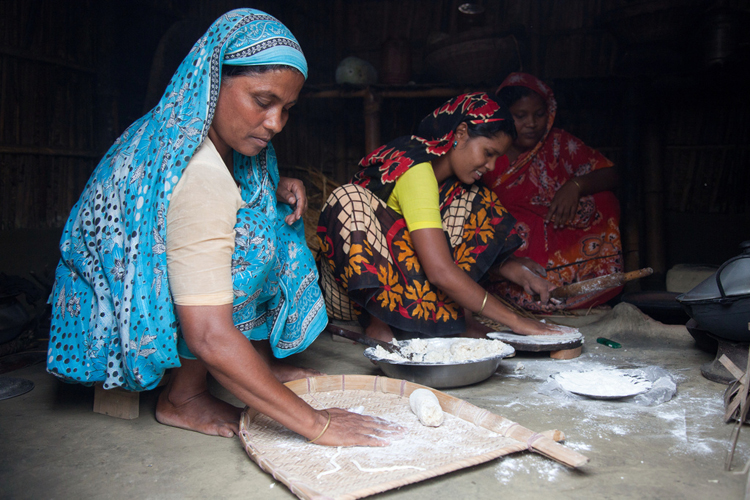
Customs and Cuisine of Bangladesh
By Linda McElroy
DFW recipe curator
The land in Bangladesh is quite flat, unlike its mountainous neighbors, Nepal and Bhutan. The soil is fertile because it’s often renewed by rivers in flood that deposit their silt as they retreat. One of the staple foods is rice and the other is fish. A common saying is, “Fish and rice make a Bengali”. Fish from rivers are considered more flavorful than fish from the ocean. A wide assortment of greens, fruits, and vegetables flourish in every season. Because the majority population is Muslim, beef, chicken, and goat are eaten, but pork is not.
Bangladesh has a distinctive cuisine that resembles that of the Indian state of Bengal, with which it shares a culture and history. Mustard oil is a common cooking oil and flavoring, and the Bengali five-spice mixture known as panch phoron is often used to flavor cooking oil before other ingredients are added. This blend of fennel, fenugreek, cumin, nigella, and mustard seed makes much of Bengal’s cuisine easily distinguishable from regions of India. Also in contrast to the Hindu cuisine of Bengal, meat is consumed, and onions are used in great quantity as both a flavoring and ingredient. Generally rice and dal (lentils) are served at most meals.
Dining Etiquette:
If invited to a meal, it is considered rude to turn the invitation down. If you are unable to attend, express that indirectly to suggest it may be difficult – “I will try,” or “I will have to see,” are acceptable responses if you cannot accept immediately
Guests are generally served first, then the oldest, continuing in order of seniority. Do not begin eating until the oldest person at the table starts. Ensure you wash your hands before eating. Even so, the left hand is considered unclean, so only eat, pass dishes, or drink with the right hand. Flatbreads such as paratha and roti are served to scoop up the food, although you will not be considered impolite if you ask for utensils. Dishes are eaten sequentially at a meal rather than served all at once. Each dish is eaten separately with a little rice or flatbread so that the individual flavors can be enjoyed.
You will be constantly urged to take more food, so pace yourself so you can consume more servings. “I’m full,” is only considered a polite gesture and you will be expected to eat more.
Sources:
Mangoes and Curry Leaves by Jeffrey Alford and Naomi Duguid; and www.uncorneredmarket.com
View Recipes from Bangladesh
Bangladesh
